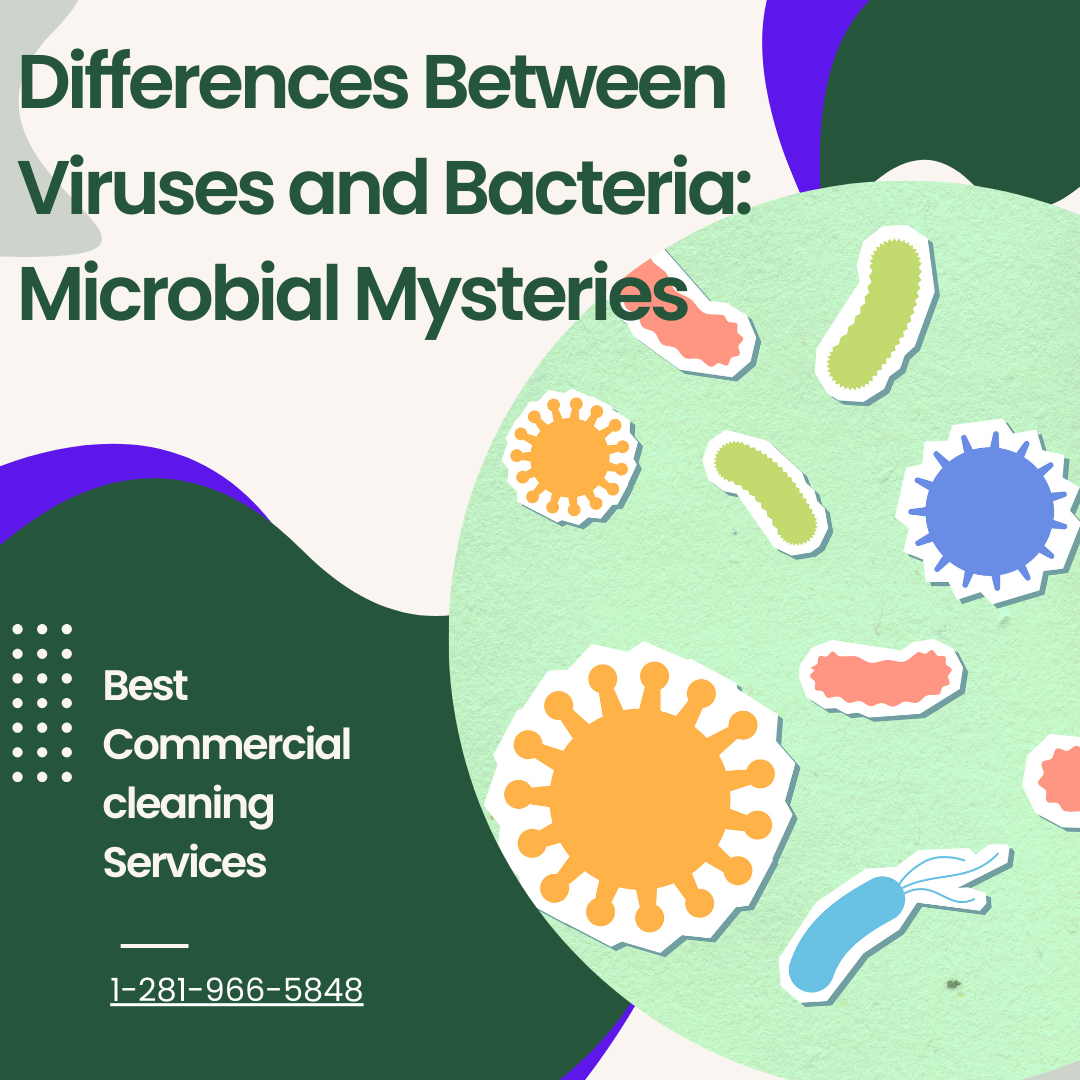In the microscopic world of microorganisms, viruses and bacteria are two distinct entities, each with its own characteristics, behaviors, and impact on the world around us. This blog aims to unravel the mysteries of these microbes, exploring the differences between viruses and bacteria while shedding light on related topics like the disease triangle, dirty floors, and the proper disposal of biohazardous waste.
Understanding Viruses and Bacteria:
- Nature and Structure:
- Viruses: Viruses are not classified as living organisms. They consist of genetic material (either DNA or RNA) enclosed in a protein coat called a capsid. Viruses lack cellular structures and can only replicate inside the cells of a host organism.
- Bacteria: Bacteria are single-celled organisms with a simpler structure. They have a cell wall, cell membrane, cytoplasm, and genetic material (DNA) within the cell. Bacteria can live independently and reproduce through binary fission.
- Reproduction:
- Viruses: Viruses cannot reproduce on their own. They require a host cell to replicate and multiply. Once inside a host cell, a virus injects its genetic material, hijacking the cell’s machinery to produce more viruses.
- Bacteria: Bacteria can reproduce independently through a process called binary fission. This is a form of asexual reproduction where a single bacterial cell divides into two identical daughter cells.
- Size:
- Viruses: Viruses are much smaller than bacteria. They range in size from 20 to 300 nanometers, making them only visible under a powerful electron microscope.
- Bacteria: Bacteria are larger, typically ranging from 0.5 to 5 micrometers in size, and can be observed using an ordinary light microscope.
The Disease Triangle:
The disease triangle represents the three factors necessary for a disease to occur: a susceptible host, a pathogen (such as viruses or bacteria), and a conducive environment. Understanding this concept helps in implementing effective strategies for disease prevention and control.
Dirty Floors and Microbial Reservoirs: Dirty floors can act as reservoirs for various microbes, including bacteria and viruses. Regular and thorough cleaning of floors is essential to prevent the accumulation of harmful pathogens and maintain a healthy indoor environment.
Proper Disposal of Biohazardous Waste: Both viruses and bacteria can be classified as biohazards, requiring proper disposal to prevent the spread of infections. Biohazardous waste, such as medical waste contaminated with blood or other potentially infectious materials, must be handled and disposed of following established guidelines and regulations.
Conclusion:
Unraveling the mysteries of viruses and bacteria provides valuable insights into the microbial world. By understanding their differences and the factors influencing disease occurrence, we can implement effective measures to promote cleanliness, hygiene, and a healthier living and working environment. Whether tackling dirty floors or ensuring the proper disposal of biohazardous waste, knowledge about these microbial entities empowers individuals and communities to make informed decisions for the well-being of all.


